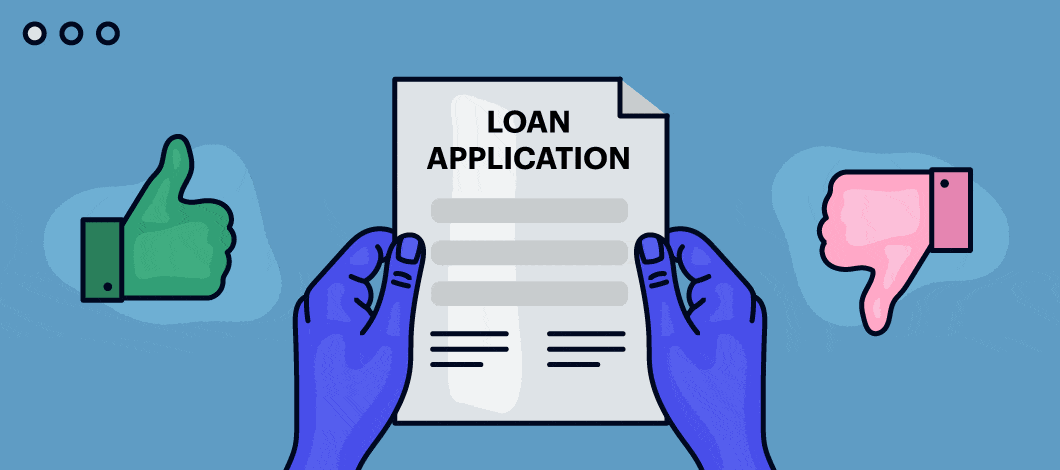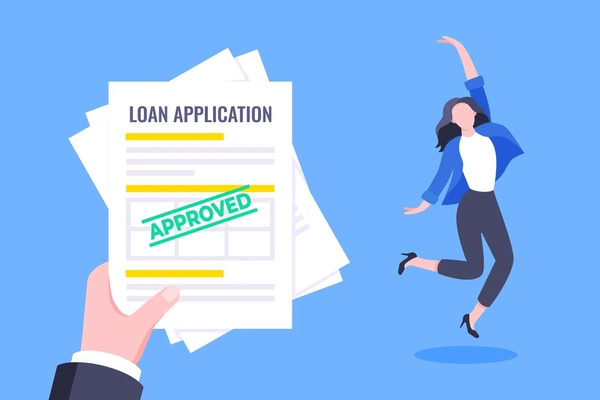Securing a loan is a significant financial milestone, whether you’re aiming to fund a personal project, consolidate debt, or invest in your business. However, the journey to loan approval can often feel like navigating a maze of requirements and criteria. Understanding what lenders truly look for can demystify the process and enhance your chances of success.
Key Takeaways
- Credit Score: Aim for a score of 750 or above for better loan terms.
- Income Stability: A steady income assures lenders of your repayment capacity.
- Debt Management: Maintain a low DTI ratio by managing existing debts responsibly.
- Employment History: Longer tenure with a reputable employer enhances credibility.
- Loan Amount: Borrow within your means to ensure manageable repayments.
- Collateral: Offering collateral can improve approval chances for secured loans.
- Preparation: Thoroughly research lender requirements and prepare your application accordingly.
Understanding the Loan Approval Process

When you apply for a loan, lenders assess your application through a comprehensive evaluation process. This process involves analyzing various factors to determine your creditworthiness and ability to repay the loan. Here’s a breakdown of the key components involved:
Credit Score
Your credit score is one of the most critical factors lenders consider. It reflects your credit history, including your ability to repay debts and manage credit responsibly. In India, credit scores are typically provided by agencies like CIBIL, Experian, and Equifax. A higher score indicates a lower risk for lenders.
- Excellent (750 and above): High likelihood of loan approval with favorable terms.
- Good (700–749): Likely to be approved, though terms may vary.
- Fair (650–699): Approval possible but may come with higher interest rates.
- Poor (below 650): Challenging to secure a loan; may require a co-signer or collateral.
Improving your credit score involves timely repayment of existing debts, reducing outstanding balances, and avoiding new credit inquiries .
Income and Employment Stability
Lenders assess your income to ensure you have the financial capacity to repay the loan. A stable and sufficient income reduces the risk for lenders.
- Salaried Individuals: Typically, lenders prefer applicants with at least 2–3 years of work experience, especially with their current employer.
- Self-Employed Individuals: A minimum of 3 years in business is often preferred.
- Income Requirements: While it varies by lender, a monthly income of ₹25,000 or more is commonly considered acceptable .
Debt-to-Income (DTI) Ratio
The DTI ratio is a measure of your monthly debt payments relative to your monthly income. A lower DTI ratio indicates that you have a manageable level of debt.
- Ideal DTI Ratio: Lenders generally prefer a DTI ratio below 50%. A higher ratio may indicate financial strain, making loan approval more difficult .
Age and Loan Tenure
Your age can influence the loan approval process, as it correlates with your earning potential and retirement plans.
- Ideal Age Range: For salaried individuals, the preferred age range is typically between 23 and 58 years. Self-employed individuals may have a broader age range, up to 65 years .
The loan tenure also plays a role; shorter tenures may have higher EMIs but are often favored by lenders due to the reduced risk over time.
Employment Status and Employer Reputation

Lenders consider the stability of your employment and the reputation of your employer. Government employees and those working with reputed organizations are often viewed more favorably due to job security .
Existing Debts and Financial Obligations
When you apply for a new loan, lenders do a deep dive into your existing financial commitments. This includes other loans you’re currently repaying—such as personal loans, home loans, auto loans, or education loans—as well as credit card balances and any other monthly obligations. Why? Because these commitments impact your Debt-to-Income (DTI) ratio, which is a key factor in determining your loan eligibility.
Why Do Existing Debts Matter?
When lenders review your loan application, one of their primary concerns is your ability to repay the new loan without defaulting. While income tells them how much you earn, it’s your existing debt obligations that show them how much of that income is already committed. This gives them a realistic view of your financial flexibility—and that’s where your existing debts play a critical role.
1. Risk Assessment Tool
Existing debts serve as a powerful risk indicator. A borrower with a high level of debt may already be under financial pressure, even if they have a decent income. Adding a new loan to that situation increases the likelihood of missed payments or defaults. Lenders use this information to gauge the overall financial risk associated with lending to you.
For example:
- If your income is ₹60,000/month but you’re already paying ₹30,000 in EMIs, your Debt-to-Income (DTI) ratio is 50%.
- This means half your income is already tied up, leaving little cushion for unexpected expenses or emergencies.
2. It Affects Your Repayment Capacity
Lenders are not just looking at whether you earn enough to cover the EMI—they want to ensure you have enough disposable income after covering your basic expenses and existing debts.
They ask:
- Can this person realistically afford another loan EMI?
- What happens if there’s a medical emergency, job loss, or rate hike?
If the answer isn’t clearly favorable, they may:
- Deny the loan altogether
- Reduce the amount they’re willing to lend
- Charge a higher interest rate to offset the increased risk
3. Negative Impact on Credit Score
Carrying large amounts of unpaid debt can hurt your credit score—especially if you’re using a high percentage of your available credit (e.g., maxing out credit cards or revolving credit lines). A lower credit score makes you appear riskier, which in turn:
- Reduces your approval chances
- Leads to higher interest rates
- Limits the tenure or flexibility of the loan
4. It Impacts Loan Structure and Terms
Even if you get approved with existing debts, your loan terms may be less favorable. For instance:
- You may be offered a shorter repayment period (higher EMIs)
- You might be required to provide collateral or a co-applicant
- You could face tighter scrutiny with additional documentation
This is especially true for unsecured loans like personal loans, where lenders have no asset to fall back on.
5. Too Many Loans Can Signal Credit-Hungry Behavior
If your credit report shows you have recently taken out multiple loans or are frequently applying for credit (including credit cards or buy-now-pay-later services), lenders may label you as “credit-hungry.”
Even if you’ve never defaulted, this behavior can raise a red flag:
- It implies a dependence on borrowed money to maintain your lifestyle
- It suggests that you may be overextending yourself financially
Lenders prefer customers who borrow responsibly and only when necessary.
6. Existing Debts Are a Leading Cause of Loan Rejection
Among the top reasons for loan rejection, high debt levels rank near the top. Even if you meet all other eligibility criteria, your loan can be denied if your current debt profile makes you appear financially overburdened.
The Impact of High Debt Levels

If your existing EMIs take up more than 40–50% of your monthly income, lenders may become hesitant to offer you additional credit. For instance:
- Case Example: If your monthly income is ₹50,000 and you’re already paying ₹25,000 toward EMIs, your DTI ratio is 50%. Even though you’re managing payments, lenders may decline further loans or offer them at a higher interest rate.
Tips to Manage Existing Debts Before Applying for a New Loan
- Pay Off High-Interest Debts First
Clear out credit card balances or personal loans that carry higher interest. This improves your DTI and boosts your credit score. - Avoid New Credit Lines
Don’t apply for other credit products (like additional credit cards) in the months leading up to your loan application. Multiple inquiries can impact your creditworthiness. - Consolidate Debts
If you have multiple loans, consider consolidating them into a single loan with a lower interest rate. This simplifies payments and may reduce your overall EMI burden. - Make Timely Payments
Even one missed EMI or late credit card payment can negatively affect your credit report. Set reminders or automate payments to stay on track. - Review Your Credit Report
Before applying for a new loan, review your credit report for errors related to past loans or ongoing financial obligations. Dispute any inaccuracies that might affect your profile. - Increase Your Income or Reduce Expenses
If possible, show additional income (freelance work, rental income, etc.) or work on reducing unnecessary expenses. A better income-expense ratio gives you more headroom for a new loan.
How Lenders Interpret Your Existing Debts
Lenders use software and algorithms to assess how your current obligations would coexist with the potential new loan. They simulate whether you’d still be able to meet all your commitments without risk of default. Hence, transparency in disclosing all your ongoing obligations during the loan application is crucial.
Bottom Line
Even if your credit score and income are favorable, high existing debts can be a roadblock to loan approval. Prioritizing debt reduction, maintaining a healthy DTI ratio, and managing your credit responsibly are essential steps in making yourself a more attractive borrower.
Collateral
For secured loans, providing collateral can significantly enhance your chances of approval. The value of the collateral should be sufficient to cover the loan amount in case of default .
Also Read : What Is Nelnet And How Does It Manage Student Loans?
Conclusion
Securing a loan involves more than just filling out an application; it requires a comprehensive understanding of your financial profile and how it aligns with lender criteria. By focusing on key areas such as credit score, income stability, debt management, and employment history, you can enhance your chances of loan approval.
Remember, each lender may have specific requirements, so it’s crucial to research and understand their criteria before applying. Being well-prepared not only increases your chances of approval but can also lead to more favorable loan terms.
FAQs
1. What is the minimum credit score required for loan approval?
Most lenders prefer a credit score of 750 or above. However, some may consider applicants with scores as low as 650, though this may come with higher interest rates .
2. Can I get a loan without a credit history?
While challenging, it’s possible. Some lenders may approve loans for individuals with no credit history, especially if they have a stable income and employment history.
3. How can I improve my chances of loan approval?
Maintain a good credit score, ensure a low DTI ratio, have a stable income and employment history, and reduce existing debts before applying.
4. Does the loan amount affect approval chances?
Yes, larger loan amounts may require stricter eligibility criteria. It’s advisable to borrow only what you need and can afford to repay.
5. Can I apply for a loan if I have existing loans?
Yes, but ensure that your DTI ratio remains within acceptable limits. Lenders may be hesitant if your existing debt obligations are too high.
6. How long does the loan approval process take?
The approval process can vary from a few hours to several days, depending on the lender and the completeness of your application.
7. What happens if my loan application is rejected?
If rejected, review the reasons provided, such as low credit score or high DTI ratio, and take steps to address these issues before reapplying.
